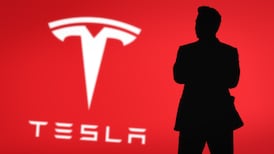“Never mistake motion for action,” the writer Ernest Hemingway is reputed to have said. It’s a maxim the Government might do well to heed.
All too often, Ministers mistake being busy for real progress in managing the problems that cross their desk. The recent history of Government policy on housing is a case in point.
Now newly installed as Minister for Transport, Fianna Fáil’s Darragh O’Brien, this week announced initiatives designed to accelerate the transition to electric vehicles (EVs). The “greening” of Irish transport is, like housing, an area where the Coalition is falling hopelessly short of targets.

How does Ireland fix its dysfunctional rental sector?
The initiatives included a “shared charging pilot scheme” under which homeowners with charging infrastructure installed will be allowed to rent that out to other EV users through an online booking platform.
READ MORE
This, said the department, will “offer cost-effective charging options for EV owners who don’t have private off-street parking”.
It made for good headlines, but is it remotely practical?
To work out how long it takes to charge your car battery, you need to divide your car battery size by the charging speed.
The most popular EV models in Ireland have batteries ranging from 58kWh to 82kWh. By and large, home chargers are what is classed as “slow chargers” – operating at about 7kW per hour.
So it will take between eight and 11 hours for a home charger to charge a car fully – conveniently allowing the exercise to be completed overnight. And people with home chargers and smart electricity meters will often opt for energy packages offering lower night-time rates to capitalise on this process.
Of course, in urban areas, car owners are unlikely to need to charge their cars every night. But, aside from civic spirit, there is no indication that there is any incentive for homeowners to turn their front drive into a 24-hour recharge point.
And at 7kW, a quick burst on a home charger is not likely to get motorists too far down the road.
The bottom line remains that this initiative is little more than an attempt to deflect from the State’s inability to oversee the rolling out of a comprehensive national network of fast chargers which most motorists cite among the main reasons for their reluctance to make the leap to emission-free driving.
Well, emission free if you discount the gas used to generate a significant amount of the electricity in the first place.
We’re good at motion: action, less so.

















